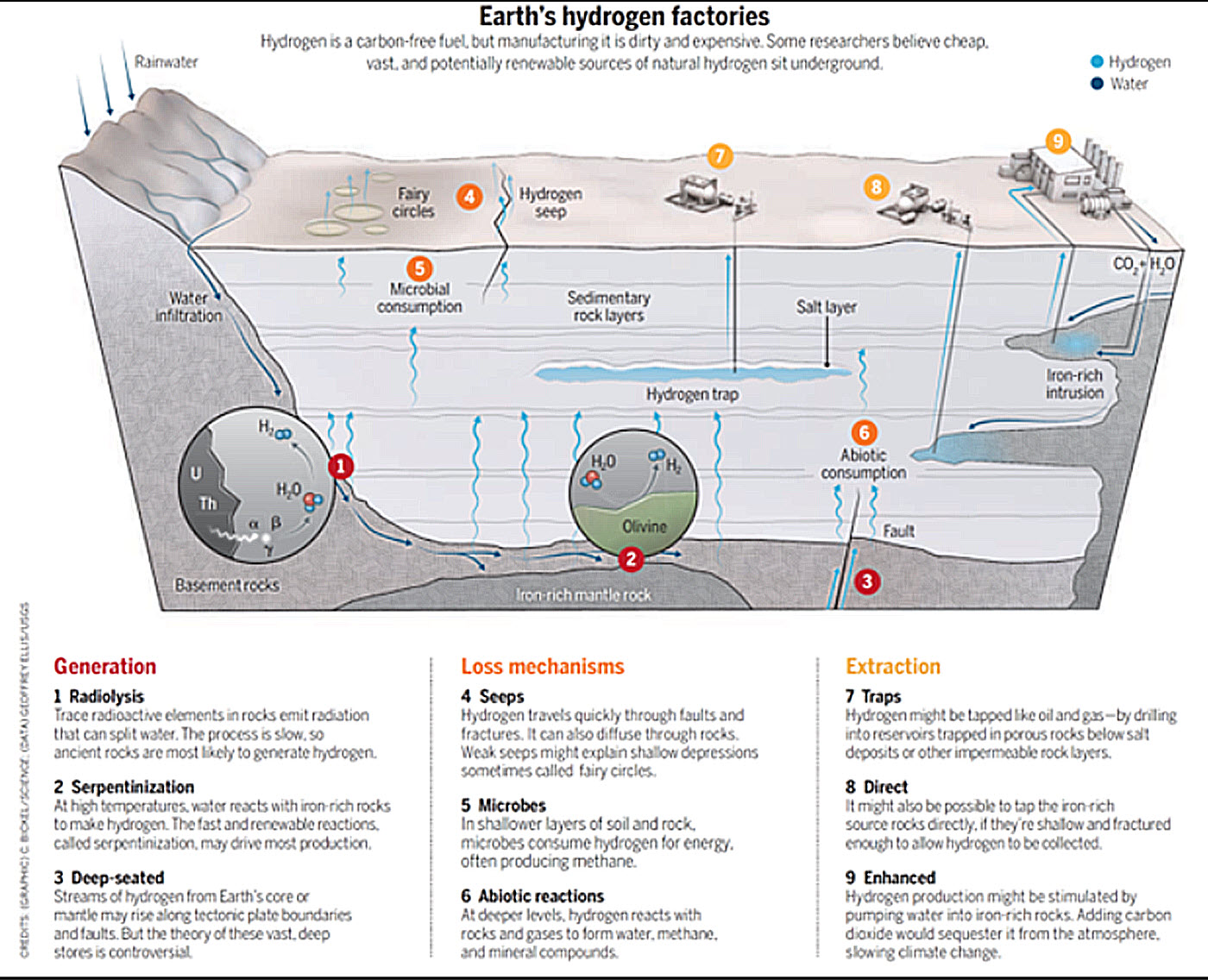
MIT Enters the Hydrogen Extraction Equation
April 13, 2024New tech may soon stimulate underground H2 production, extracting it out of rocks below
New technology is in development to help stimulate the natural production of hydrogen fuel underground, opening the potential to obtain H2 more cheaply than the current most popular methods.
The research is being conducted at MIT
The strategy is being pursued by Professor Iwnetim Abate, a Chipman Career Development Professor and Assistant Professor of Minerals Science and Engineering at MIT. The goal is to be able to obtain hydrogen fuel efficiently, cleanly and affordably to help support global decarbonization.
Not long ago, the belief was broadly held that the most common element in the universe, hydrogen, wasn’t found in underground deposits in any way that would be practical for extraction and use. However, naturally occurring pockets are being increasingly discovered. This has inspired researchers to look to other opportunities to draw from naturally occurring H2.
The DoE is interested in this hydrogen extraction process
The US Department of Energy (DoE) awarded 18 research teams grants totaling $20 million to fund laboratories, universities, and private companies working on tech that can extract H2 naturally occurring underground.
This type of H2 is known by several names, such as white hydrogen or gold H2. That said, when it’s specifically extracted from rocks, it is termed geologic hydrogen.
Geologic hydrogen fuel
Geologic hydrogen production occurs in rocks rich in iron, when they are exposed to water. The combination leads to a reaction that oxidizes the iron.
Professor Abate received a DoE research grant of $1.3 million to pursue this H2 extraction method. He and his team will use the funding to determine the ideal conditions for underground H2 production. This will keep in mind issues such as temperature, pH levels, pressure, and the catalysts needed to trigger and boost the reaction.
Their purpose will be to enhance large-scale production efficiency to better meet the world’s energy needs in a way that is clean and cost competitive.
How much is there to extract?
According to estimates from the US Geological Survey, there could be billions of tons of geologic hydrogen fuel under the surface of the Earth. Extractable deposits are already being accessed by startups worldwide. That said, in this particular case, the aim is to launch H2’s natural production, not just discovering and tapping pockets of the gas already trapped underground.
Koloma and the Race for Underground Hydrogen
One such company is Koloma, a Denver-based startup that has caught the eye of high-profile investors, including Bill Gates. Koloma has secured $91 million in funding to explore and drill for natural hydrogen in the U.S., positioning itself at the forefront of the geologic hydrogen revolution. The company’s ambitious efforts are part of a broader movement to harness natural hydrogen as a key player in the transition to clean energy.
Beyond individual startups, the industry has seen a collaborative effort between the Geological Survey, the Colorado School of Mines, and a handful of ambitious startups dedicated to studying and drilling for geologic hydrogen.This joint effort highlights the increasing acknowledgment of geological hydrogen’s capacity as a fuel for decarbonization, drawing millions in investments and initiating exploration projects by at least 10 companies.
As governments worldwide seek carbon-free energy alternatives to fossil fuels, the exploration and development of geologic hydrogen offer a promising avenue. With its potential for decarbonization and the backing of significant investments, geologic hydrogen stands poised to play a crucial role in the next generation of energy solutions, driving forward the clean energy transition and reshaping the global energy landscape.



 With over 15 years of reporting hydrogen news, we are your premier source for the latest updates and insights in hydrogen and renewable energy.
With over 15 years of reporting hydrogen news, we are your premier source for the latest updates and insights in hydrogen and renewable energy.